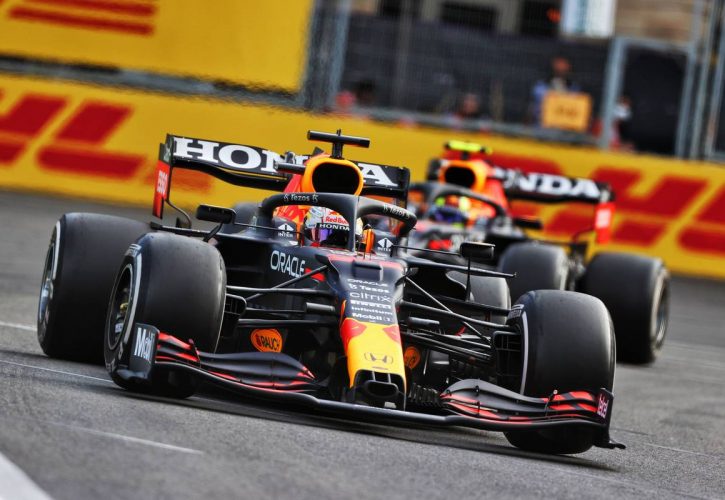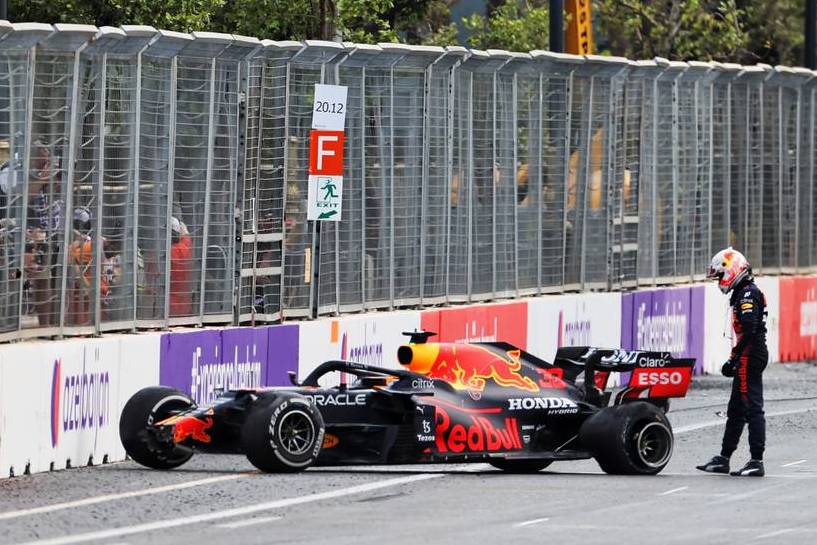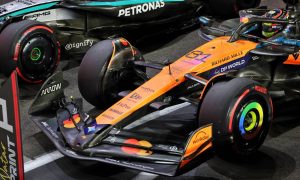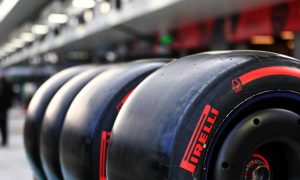
Pirelli F1 boss Mario Isola insists Red Bull and Aston Martin ran with lower pressures in Baku that contributed to their tyre failures, but neither team broke the rules.
Pirelli concluded in its official report that followed its investigation into the blowouts that occurred in the Azerbaijan Grand Prix that "running conditions" had contributed to the "circumferential break on the inner sidewall" of the rear-left tyre that led to the failures.
But the Italian manufacturer's report stopped short of clearly blaming Red Bull and Aston Martin for the incidents, but hinted that both teams had perhaps found a way to lower their tyre pressures below the prescribed minimum level while their cars were out on track.
The lower pressures, which allow for a greater contact patch for the tyre and therefore for a subsequent gain, led to "standing waves" being generated on the rear-left tyre's inside shoulder at high speed on Baku's long straights.
"What happened in Baku is simply that the running conditions expected were different compared to the actual running conditions - and that created the failure," Isola told the media on Thursday in France.
"When you have a lot of energy going into the tyres, with the pressure that is lower compared to the expectation, the result is that on the sidewall you have what we call standing waves.
"Standing waves are putting a lot of energy into the inside shoulder of the tyre. And at a certain point, the tyre breaks. That is what happened, and the reason why we had this situation in in Baku."

But Isola admitted that Pirelli's theoretical car performance predictions for Baku, based in part on data supplied by the teams, proved somewhat different to the real performance.
"When we prepare the prescriptions [for minimum pressure], we receive the simulations and we consider margins," he explained.
"The expected loads, the downforce or the speed, are simulated, so it is not exactly the value that we find on track. And in this case in Baku, we also found some parameters that were not exactly what we found on track.”
"We assume that they are running at a certain pressure, and a certain camber. And with a margin on it, of course, we run in a condition that is okay for the tyre.
"In that case, we didn't achieve these conditions, not because teams were doing something against the regulations, but because they were looking as usual for performance, and that created a different scenario to what we were expecting.
"And the different scenario was that mainly the tyres were running at a lower pressure compared to expectation."

Both Red Bull and Aston Martin issued statements saying that they had adhered to Pirelli's prescriptions regarding minimum pressures, which the tyre supplier confirmed.
However, all teams rely on different sensors to monitor pressures and temperatures when a car is on track, and the information isn't therefore considered as probative or conclusive by Pirelli.
Next year, teams will all run a standard pressure sensor as part of F1's change to 18-inch wheels, which will allow Pirelli to monitor running pressures.
"If the regulation is not written that there is a [minimum] running pressure that you have to respect, I cannot say that they were doing something against the regulation in their search of more performance," continued Isola.
"If they respect the starting pressure, they are complying with the regulation. If the same happens next year when we, with the standard sensor, impose a running pressure, in that case they are against the regulations. But this is not the case this year."
Gallery: The beautiful wives and girlfriends of F1 drivers
Keep up to date with all the F1 news via Facebook and Twitter







